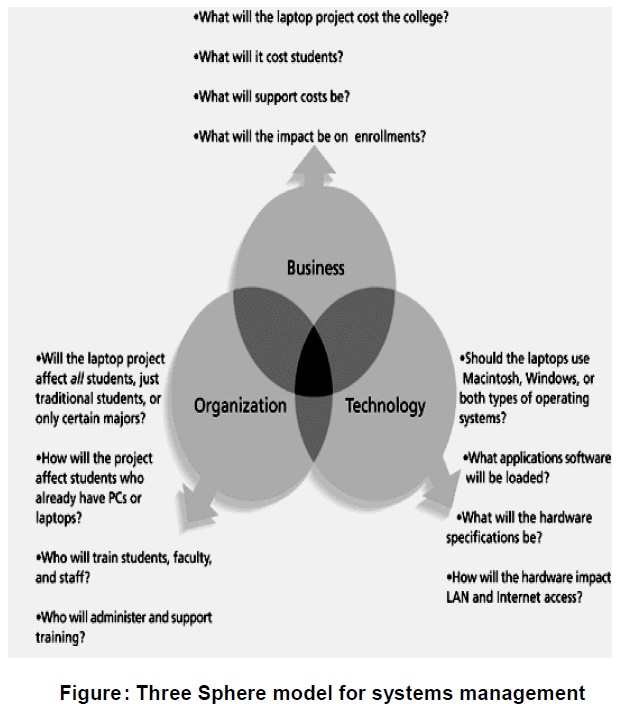A SYSTEMS VIEW OF PROJECT MANAGEMENT
There are many aspects of project management that are important and worthy of comment. There are so many details that must be handled in order for a project to be successful. To be able to handle the day to day details while still keeping your eye of the strategic whole is a demanding task but one that can be learned and improved.
As the project is a temporary, one-time endeavor undertaken to solve a problem or take advantage of an opportunity, It usually has a customer or customers (either internal or external to the organization that are doing the project), a budget or a set of scarce resources that must be managed and some kind of timeframe/constraint for completion or operation. Before one can undertake a project to solve a problem one must first understand the problem. Not only understand the details of the problem but also understand who has the problem and the context and environment that must be taken into consideration in addressing the problem.
A key practice in getting things clear is to look at the problem from the customers and users perspectives.
- What is important to the customer?
- How will the user actually be using the system.
- What does the world look like from their perspective?
- What do they value and what is the solution worth?
- Engineers tend to focus on features while customers are interested in benefits; how will this help them solve their problems.
One way to get this perspective is to spend time with the customers and users and enter into a dialog with them. If project managers run projects in isolation, these projects will never serve the needs of the organisation for which it is undertaken. Project managers thus should consider projects within the greater organizational context and take a holistic view of a project. Systems thinking describes this holistic view of carrying out projects.
A systems approach is an overall model for thinking about things as systems. Systems are sets of interacting components working within an environment to fulfill some purpose. System analysis is a problem-solving approach that requires defining the scope of the system, dividing it into its components, and then identifying and evaluating its problems, its opportunities constraints and needs. Once this is completed, the systems analyst then examines alternative solutions for improving the current situation, identifies an optimum, or at least satisfactory, solution or action plan, and examines that plan against the entire system. Systems management addresses the business, technological, and organizational issues associated with creating, maintaining, and making a change to a system.
Using a systems approach is critical to successful project management. Top management and project managers must follow a systems philosophy to understand how projects relate to the whole organisation.
The Three Sphere model for Systems management:
The three-sphere model of systems management deals with the business, organizational and technological aspects and/or issues related to the project that should be defined and considered in order to select and manage projects effectively and successfully. In terms of addressing its advantage on the business side, a project should supplement or serve as an answer to the business goals; whereas, the technological sphere should state the proper hardware and software issues to be resolved. As for the organizational aspect, matters involving the stakeholders should be taken into full consideration. If the project manager would be able to point out as early as possible the aforementioned issues and integrate it to the project it would definitely aid in determining if an organization should invest and produce the project.

A Case:
A programmer was given a task to convert a static website of a magazine into a dynamic PHP website; what prompts the management to engage into this project is the fact that the web has become more sophisticated and that there has been a major shift of “print” audience to the internet. You’ll find below the business, organizational and technological issues of the said project.
Business issues:
1. Would the website be the medium in response to the impact of the internet in a publishing company?
2. Would the website supplement the magazine in terms of advertising?
3. What will the project cost the company?
4. What would be the impact of the website to the sales of the magazine?
5. What would be the cost of maintaining the whole system for the website?
Technological issues:
1. What operating system, server platform, scripting language and database should be used?
2. What will be the server and desktop specifications?
3. Does our current network setup allow employees to develop this project, or do we need an upgrade?
4. Do we have the right internet connection to support this project?
Organizational issues:
1. Do we have the existing manpower to develop the project?
2. What would be the impact of the website to the magazine’s print division?
3. How will the website affect our print audience?
The most important issues are from the business and organization spheres, since these two primarily follows the business philosophy – it would definitely be pointless if a project fails to meet the endeavors either on the business or organizational side – it’s doomed to fail if that is the case. Among the three, I guess the technological issues are the easiest to resolve.
